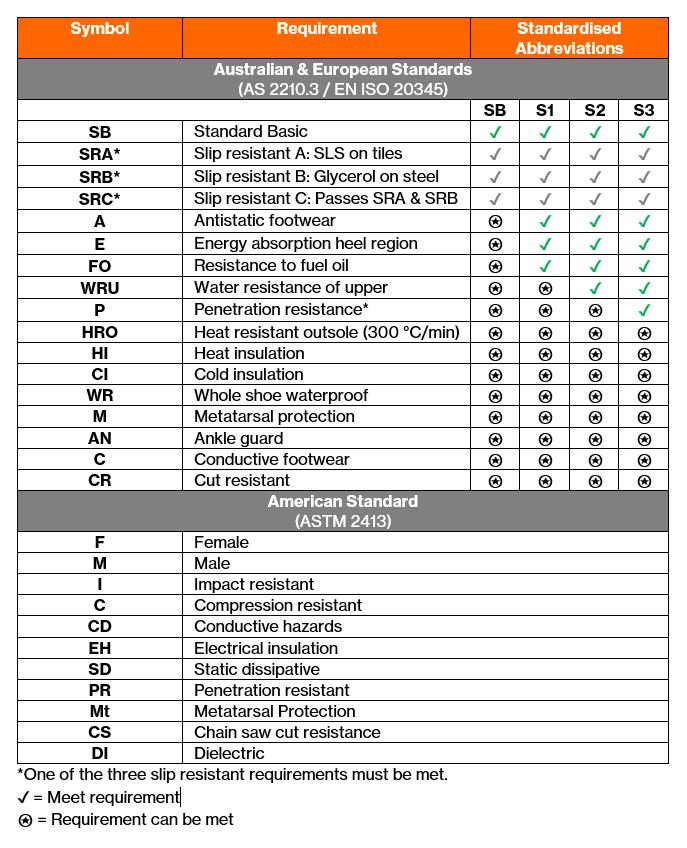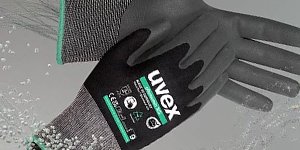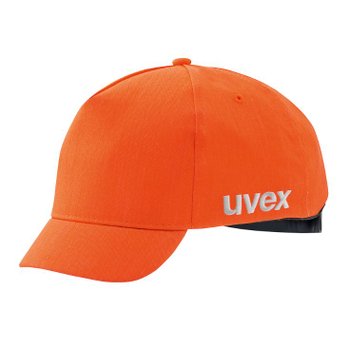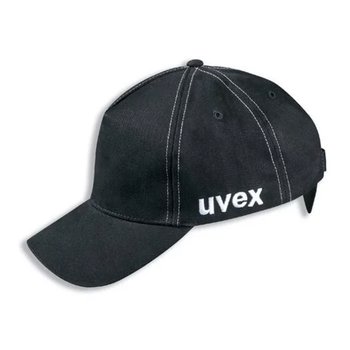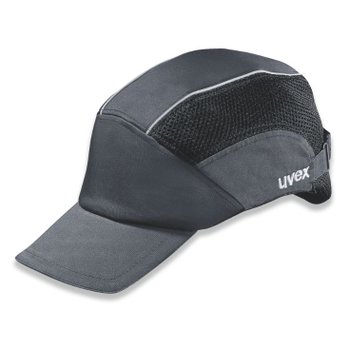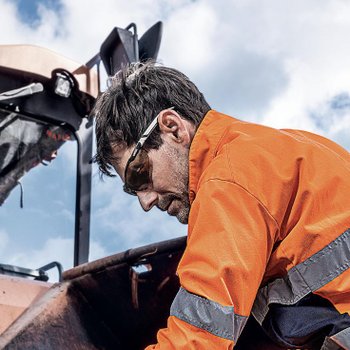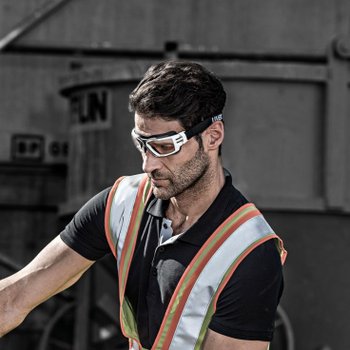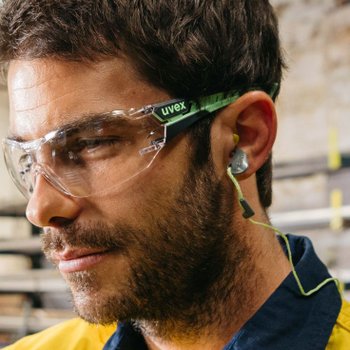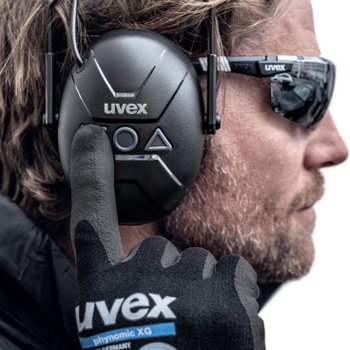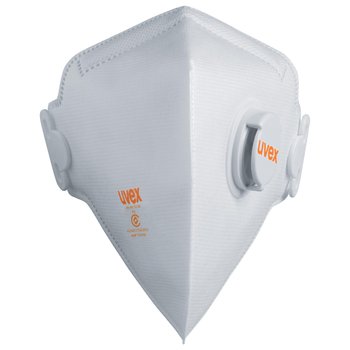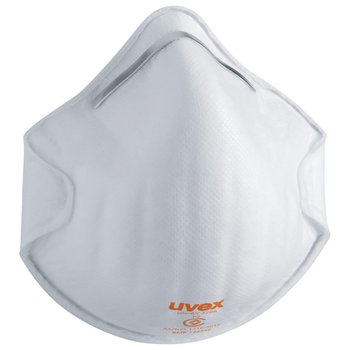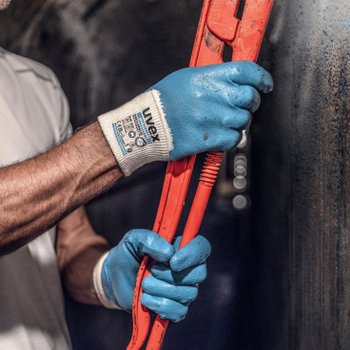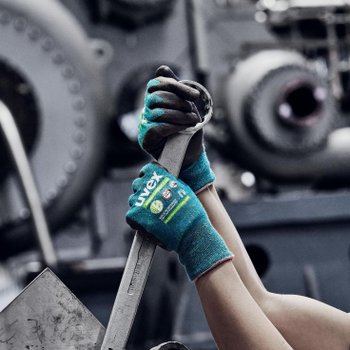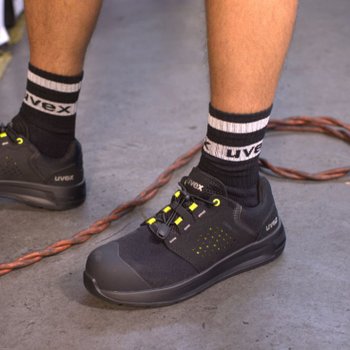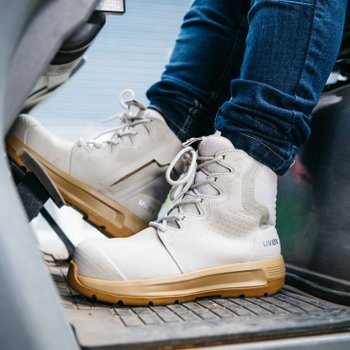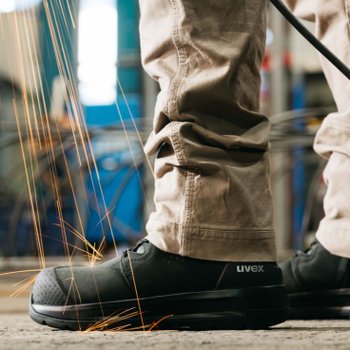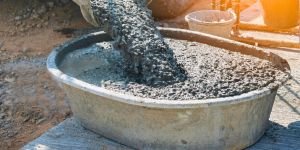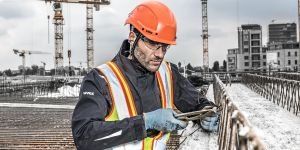
Questions and answers on the subject of footwear
uvex safety footwear is manufactured in multiple widths in the same length to provide a better fit. This allows workers to get a suitable fit regardless of gender.
uvex safety footwear is categorised as suitable for 1- light, 2 - medium or 3 - heavy-duty use. Each uvex style is named according to its intended application area and is the reason each style includes a 1, 2 or 3 in the style name. Models intended for heavy-duty use have a 3 in the name of the style. However, the employer’s risk analysis for the workplace is essential when selecting appropriate footwear. In case of doubt, please contact the uvex customer service team.
Safety footwear can be made to be water resistant or waterproof. Water resistant footwear is made with hydrophobic upper material and can withstand a certain amount of moisture. Water resistant footwear can be certified and is labelled with the abbreviation of WRU, S2, S3, O2 or O3. If footwear needs to be waterproof, it must have either a waterproof membrane or be a gumboot (polymer) boot. Waterproof footwear can be certified to be waterproof to a specified height and is labelled with the abbreviation of WR and gumboots with S4, S5, O4 or O5. Waterproof membranes can be breathable; however, they are always less breathable than footwear without a membrane. In hot working environments the relative benefits between having waterproof footwear and reduced breathability should be assessed.
All uvex safety footwear is certified as slip-resistant in accordance with the Australian and European standards and can be certified to either SRA, SRB or SRC (depending on the model). SRA footwear is slip resistant to soap (SLS) on ceramic tiles. SRB footwear is slip resistant to fat (glycerol) on steel. SRC footwear needs to pass both the SRA and SRB tests. The slip resistant tests are undertaken in laboratory environment and the slip resistant performance of footwear in the work environment should be assessed. To find the right type of footwear for your needs, please contact the uvex customer service team, who will be happy to help you.
The selection of the best sole material depends on the workplace and the relevant risk analysis. TPU (Thermoplastic Polyurethane) soles are one of the more common sole materials in the safety footwear market and are flexible, light and typically have a heat resistance up to 130°C. In contrast, rubber outsoles have better heat, cut and chemical resistance. Rubber outsoles are usually certified to be heat resistant up to 300°C and are labelled with the abbreviation HRO. In case of doubt, please contact the uvex customer service team.
“Vegan” is a broad term, which we cannot currently use for our uvex footwear. However, we have a range of products made of synthetic materials such as textiles or microfibers that are free from materials of animal origin.
Different footwear upper materials are available, depending on the intended use and risk analysis. Textiles are lightweight and breathable, microfibre is also lightweight, breathable and durable. Leather uppers are particularly robust and heat-resistant.
In Australia safety footwear is often referred to as ‘steel caps’ as this was the traditional material used in safety footwear. However, regardless of the material, toe caps for safety footwear must meet the same requirements. They are tested to resist an impact drop test (200 joules of drop energy, which is equivalent to approximately 20 kg from a drop height of one metre) and a compression test (15 kN, which is approximately 1.5 tonnes). After maximum load, the remaining height under the toe cap is determined and compared with a minimum requirement, depending on the footwear size. The toe caps used for uvex safety footwear have to pass the ‘uvex Standard Compliance’ which is higher than the standards to ensure workers are protected. Composite toe caps are significantly lighter than steel toe caps, are insulating in the cold and heat, nonmagnetic and are nonconductive. Therefore, composite toecaps can be used in areas with metal detectors or induction loops.
Non-metal, penetration-resistant midsoles are made of multilayer, highly tear-proof textiles, while steel midsoles are made of a full-length steel plate. Attention: Please note that the penetration resistance of this kind of footwear has been measured in the laboratory using a truncated test nail with a diameter of 4.5 mm and a force of 1,100 N. Higher forces or nails of smaller diameter can increase the risk of penetration. In such circumstances, alternative preventative measures should be considered.
Two generic types of penetration-resistant insole are currently available in PPE footwear. These are made from metallic and non-metallic materials. Both types meet the minimum requirements for penetration resistance in accordance with the standard marked on the shoe but each has different additional advantages or disadvantages, including the following:
Metal: Is less affected by the shape of the pointed object / hazard (e.g. diameter, geometry, sharpness). Due to the limitations of the shoe manufacturing process, the entire tread of the shoe is not covered.
Non-metal: May be lighter and more flexible, and covers a greater area when compared with metal but the penetration resistance may be affected more by the shape of the sharp object / hazard (e.g. diameter, geometry, sharpness).
For more information about the type of penetration-resistant insoles in your footwear, please contact the uvex customer service team.
The uvex multiple fit system means that in many styles of footwear, each shoe is available in different widths. Details can be found in the product descriptions for each item. To determine the width you need, use our multiple fit system guide or the uvex size advisor app.
To determine the width, the foot length and circumference around the ball of the foot at the base of the little toe and big toe (i.e. the widest part of the foot) should be measured in millimetres. Identify the correct size and width from the uvex footwear size chart which is available in the catalogue and on our website. Alternately, the uvex size advisor app can be used to determine the correct size. In case of doubt, the uvex customer service team will be happy to assist you.
uvex safety footwear can only be used with insoles which have been certified for use in the style of footwear as specified within the Australian and European safety footwear standards. Insoles not certified for use with the footwear style inevitably lead to the loss of certification of the footwear. Therefore, only insoles supplied by uvex and certified for the specific footwear style should be used.
uvex safety shoes comply with the EU REACH chemicals regulation, in accordance with the environmental principles of the uvex group.
It is not possible to give an expiry date of footwear due to a variety of factors that affect footwear. As a guide, footwear should be used within five years from the date of production. How long safety footwear can be worn for varies enormously due to the number of factors affecting footwear. The wearable life depends on where the footwear is worn and external factors such as heat, cold, moisture, UV radiation, chemical substances and mechanical loads.
Footwear must be checked for externally visible damage before each wear and replaced if any damage is present – e.g. integrity of upper and outsole, sufficient tread, functionality of fastening mechanisms. Footwear that is no longer usable must be disposed of as either industrial or household waste.
Footwear must be stored and transported properly, preferably in cardboard packaging in a dry environment. Footwear should not be stored at temperatures over 25°C or in environments with humidity levels of over 70%. Storing footwear at extreme temperature environments will reduce the lifespan of the footwear. This is particularly the case for footwear that incorporates polyurethane (PU) components that have an increased risk of hydrolysis in hot and humid environments.
The month and year of production can be found on the tongue label of the footwear in the format month/year.
After use, remove excess dirt from the footwear and dry the footwear naturally to improve the hygiene and life of the footwear. Dying wet footwear on heaters or direct heat is not recommended. Treat uppers using commercially available products for the relevant upper material. Leather uppers should be treated regularly to prevent the leather from drying and cracking. Leather upper footwear should not be exposed to cement, concrete or lime as it will adversely affect the life of the footwear. Gumboots should be used when working with cement, concrete or lime.
Suitable footwear must be selected on the basis of the risk analysis for the workplace, together with the health and safety officer. Only footwear that meets the requirements for the identified hazards can protect the wearer. Before using the footwear, ensure that they fit correctly; various models are available in different widths.
Safety footwear is the technical name for what is commonly referred to as ‘work boots’ or ‘steel caps’ in Australia and New Zealand. The Australian Standard for safety footwear is AS 2210.3 and is part of a five-part standard AS 2210 that outlines the requirements for safety, protective and occupational footwear.
AS/NZS 2210.1 Guide to selection, care and use of safety, protective and occupational footwear
AS 2210.2 Test methods
AS 2210.3 Specifications for safety footwear that contains the strictest toe cap requirements (200J impact and 15kN compression)
AS 2210.4 Specifications for protective footwear that contains a protective toecap that resists 100J of impact and 10kN of compression. Not common in the market.
AS 2210.5 Specifications for occupational footwear that provide protective features but do not contain a toe cap. For use in areas in which toe protection is not required but other safety elements are required.
Thanks to a special insole and sole design, anti-static footwear is able to reduce electrostatic charge by dissipating the electrical charges from the foot to the ground. To do this, the shoes must have a defined contact resistance in order to ensure that this dissipation works but must also guarantee a basic level of protection against dangerous electric shocks of up to 250 volts. Antistatic footwear is recommended to be worn in volatile areas or around equipment that is sensitive to static electricity. Footwear should always only be secondary line of defence and other protective measures should be taken when working around live electricity. Electrical hazard (EH) protective footwear is recommended to be worn in work areas where accidental contact with electricity could occur.
The sole compound in electrical hazard (EH) footwear has been specifically designed to resist 18,000V at 60Hz for one minute. EH footwear is recommended for electricians, plumbers and other workers that may be at danger of accidental contact with live electricity. EH footwear should not be worn in areas with explosive hazards and around equipment sensitive to static electricity where conductive or antistatic footwear is recommended. EH insulating properties of footwear can deteriorate significantly with excessive wear of the sole and or exposure to wet and humid environments. Footwear can also become contaminated with conductive materials such as metal shavings, etc, which could reduce the effectiveness of the protection provided. Important note: EH footwear should only be used as a secondary source of protection against accidental contact with electricity.
All safety footwear needs to be labelled with the standards that it has been certified to comply with. Due to the number of mandatory and additional standards that footwear can be certified to in the Australian and European standards the most common combinations of additional standards have simplified abbreviations for ease of labelling. Footwear with the certification SB to S5 is safety footwear with a safety toe cap, footwear with the certification OB to O5 is occupational footwear without a toe cap but contain other protective elements. SB and OB certified footwear meet all mandatory requirements of the relevant standards.
SB Meet the mandatory requirements for safety footwear.
S1 Basic requirement, closed heel, anti-static, energy absorption in the heel, fuel oil resistant outsole
S1 P Basic requirement, closed heel, anti-static, energy absorption in the heel, fuel and oil resistance of the outsole, penetration resistance
S2 As for S1, also including the water resistance of the footwear upper material, no perforation or decorative stitching
S3 As for S2, also including penetration-resistant midsole and treaded outsole
S4 and S5 Gumboots/polymer boots made of PVC or polyurethane or other materials OB Meet the mandatory requirements for occupational footwear
OB Meet the mandatory requirements for occupational footwear
O1 Basic requirement, closed heel, anti-static, energy absorption in the heel
O2 As for O1, also including the water penetration and absorption of the outer shoe material, no perforation or decorative stitching
O3 As for O2, also including penetration-resistant midsole and profiled outsole
O4 and O5 Gumboots/polymer boots made of PVC or polyurethane, for example
All safety footwear needs to be labelled with the standards that it has been certified to comply with. Due to the number of mandatory and additional standards that footwear can be certified to in the Australian and European standards the most common combinations of additional standards have standardised abbreviations for ease of labelling. Below is an overview of the requirements and their respective certification:
